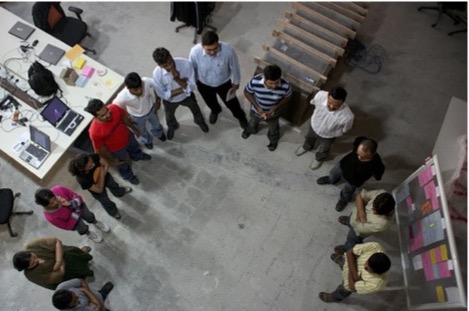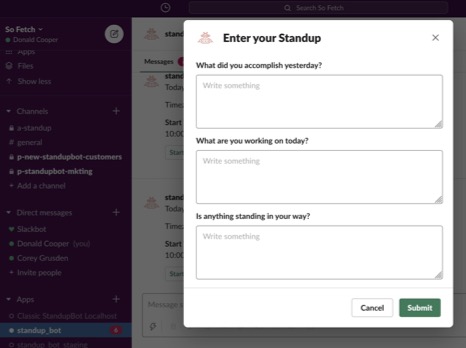
Our collection of knowledge, best practices, and tips we’ve learned over the past 15 years.
When was the last time you stood up in your daily standup? Have you ever stood up for your standup? Why is it called that? And what’s the purpose of these meetings anyway, especially now that we’re all remote?
Daily standups have been somewhat of a ritual for startups and software teams for the past 20 years. But recently people have come to despise them, thinking they are a big waste of time.
In this blog we explore the history of the standup, how it's changed over time (especially in the remote work environment during COVID), look at the value of this tradition going forward, and provide some thoughts directly from scrum masters and lead engineers.
In agile software development, frequent communication is key. The daily standup (“meeting” or “scrum” are other terms) is designed to provide a quick status update to your team. The discomfort of standing for too long is just a physical trick to ensure the meeting is short, thus its name.

The HatersThe Haters
There are a lot of reasons why developers have come to despise their daily standup meetings:
Teams generally agree status updates are valuable, but are solving them with products such as these asynchronous, virtual standup tools built on Slack:

Many teams still see lots of value in daily meetings, especially those that believe in the core tenets of agile and scrum:
Generally most developers agree there are good practices and bad practices.
It’s been over a year since we’ve seen our coworkers face-to-face. No matter your feelings on remote work, we’re all starved for social connection and using any opportunity to engage with our colleagues. Social time has crept into standups because of their frequency and need for connection. Standups have started to serve two purposes: one of status update and one of social bonding, which goes against the grain for the original idea.
If you are a scrum master, team lead, or engineering leader, it is important to maintain discipline in your standups. Go back to the basics. Standup, even if on Zoom. Create separate meetings and opportunities for social interaction and make it clear to your teams the purpose of daily standups and how they should be run.

Admios is a firm believer in agile software development so you won’t find many haters among our ranks, however some have acknowledged the negative evolution of scrum meetings and the need to get back to the core tenets.
“The benefit of standup is a quick summary that gives you a general idea of where everyone is at, and allows discovering any conflicts or duplicate work before it is too late.”
“It’s good for accountability. No one wants to talk about the same task for a whole week, so it pressures people to keep doing their work in a way that would be hard otherwise when everyone is working from home.”
“Standups have evolved at a point that lost sense of what agile was supposed to be, standups should be quick updates 15 minutes max, if there are topics that need to be discussed further that is not a standup that is a brainstorming session, a pairing session or something else.”
In speaking with many developers and team leads, nobody really hates standups...they just hate what they’ve become. If we can kill this morphed, lets-meet-everyday-cause-its-what-we-do meeting and get back to the original intent of the daily standup, we should see a boost in team morale as well as product velocity.
If you have any questions on how Admios runs standups and helps clients boost product velocity, get in touch to chat.